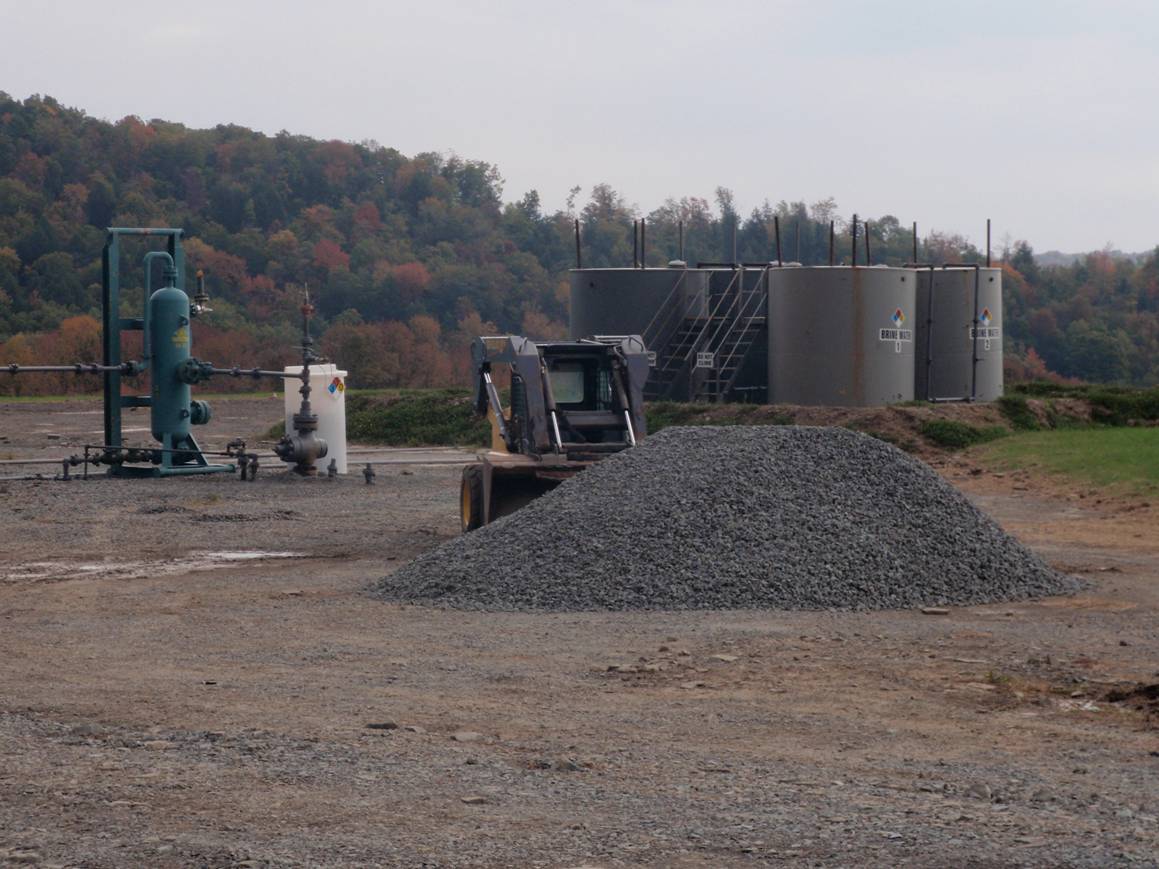News flash: Halliburton exec becomes (presumably) world's first fracking-fluid imbiber.
Don't Do This at Home, Boys and Girls
Yes, it's apparently true. As part of the publicity surrounding the introduction of Halliburton's new fracking fluid formula known as CleanStim, CEO Dave Lesar had one of his executives take a swig of the stuff in front of what must have been a stunned audience at a conference held by the Colorado Oil and Gas Association. The swigger's identity is unknown, as are his current whereabouts and condition. However, a Halliburton spokesperson categorically denied that said executive was later seen leaping a tall building in a single bound in the vicinity of company headquarters.
According to its literature, the CleanStim formulation is "made with ingredients sourced from the food industry." But there's an asterisk next to that description, kind of like those TV shows when someone does a stunt and then advises, "Don't do this at home, boys and girls." Even though, in Halliburton's words, "all the ingredients are acquired from food suppliers," and even though the stuff is presumably safe to drink at oil and gas confabs, "the CleanStim fluid system should not be considered edible."
After an Aperitif: The Ongoing Investigation into Fracking Fluid Ingredients
Will the production of a food-based fracking fluid help to rehabilitate the public's sagging opinion of hydraulic fracturing, a.k.a hydrofracking or fracking? It probably can't hurt. Much of the public's concern about the practice is centered around the ingredients used in the mix of fluids that the industry injects at high pressure and large volumes into shale gas wells during development, especially during the fracturing process that is critical to breaking up the rock to allow the shale gas to be pumped to the surface.

A Marcellus Shale gas pad. As fracking becomes the industry standard to extract natural gas from shale rock, people want to know what chemicals are used in the process. Halliburton's new product seems aimed at assuring safety. But questions remain. (Photo: Duke University)
For the most part, we're in the dark when it comes to the ingredients used at individual well sites. But what little we do know suggests that the stuff is not made for even the occasional swig. The types of chemicals used include:
- A friction reducer (KCl or petroleum distillate)
Perhaps the most comprehensive list can be found in a report issued in April by the Democrats on the House Energy and Commerce Committee. The report details 750 chemicals used by 14 leading oil and gas service companies, but also notes that it is incomplete, because
In many instances, the oil and gas service companies were unable to provide the Committee with a complete chemical makeup of the hydraulic fracturing fluids they used. Between 2005 and 2009, the companies used 94 million gallons of 279 products that contained at least one chemical or component that the manufacturers deemed proprietary or a trade secret.
Some Disclosure Efforts Are Taking Root
However, things are changing. Five states -- Wyoming, Michigan, Texas, Pennsylvania and Arkansas -- have fracking-fluid disclosure rules on the books. And a few others, as well as Congress, have proposed rules that are awaiting legislative action.
Even companies are taking some steps at disclosing some information about their fracking chemicals. This industry website offers up a search tool that allows you to look up a given well in a given county in a given state.
However, such efforts are getting mixed reviews, and it's not clear if these moves toward transparency, filled as they are with a fair share of loopholes, are giving the public the information it is clamoring for. (See ThinkProgress's chart on the five states and what their regulations do and do not do.)
While there's no indication that Halliburton is about to release the recipe for its new, not-quite-food-based CleanStim fracking fluid, given the kinds of stuff that normally goes into such products, the development of CleanStim is almost certainly a positive step.
My former colleague Mark Brownstein, an attorney at Environmental Defense Fund, has his doubts, though. Or maybe it's guarded optimism. He was witness to the Halliburton fracking-fluid-drinking display and observed, "I wonder why, if they have this technology, it wouldn't become standard practice."
So, hurrah for Halliburton, maybe. And bottoms up, everyone.
This piece is cross-posted with TheGreenGrok.com, the blog by the dean of Duke's Nicholas School.